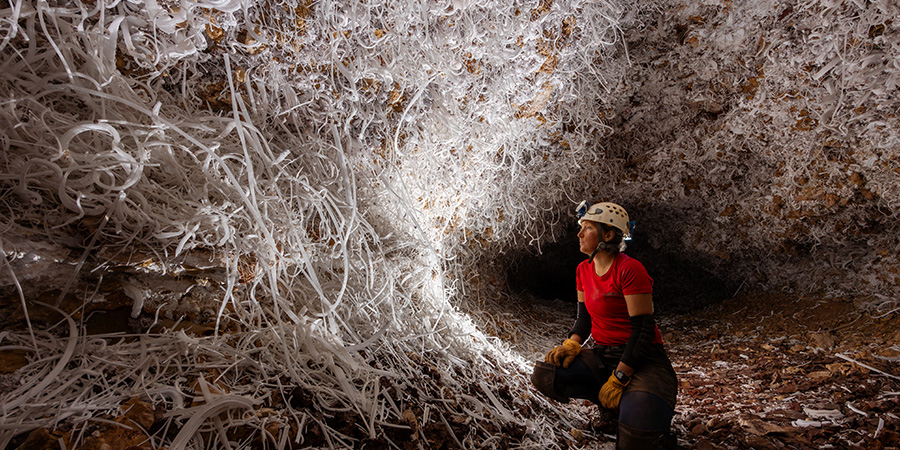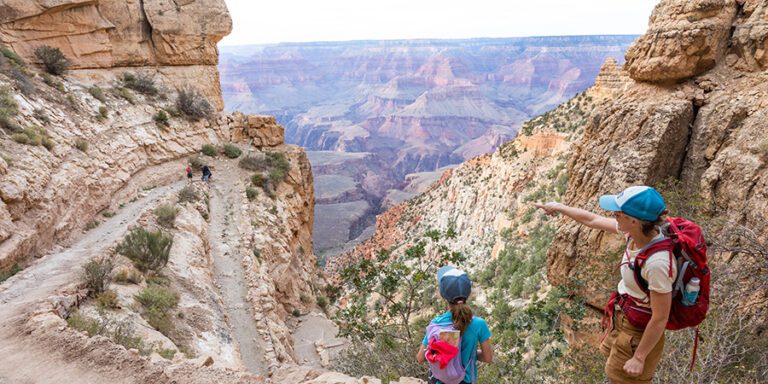
Three natural and cultural history stories that will deepen your understanding of the Grand Canyon.
Twice a year, the Grand Canyon Trust publishes its award-winning Colorado Plateau Advocate magazine. We’ve chosen three Grand Canyon favorites from the magazine archives guaranteed to awe, amaze, and deepen your understanding of the canyon.
From 50,000-year-old bats discovered in a Grand Canyon cave, to the stories agave plants tell us about the canyon’s Indigenous history of migration, trade, and farming, to what a very old goat horn might reveal about connections between the Grand Canyon and the Bears Ears region, these stories bring the canyon’s history to life. Ready to dig in?
1. Inside the Grand Canyon’s longest known cave
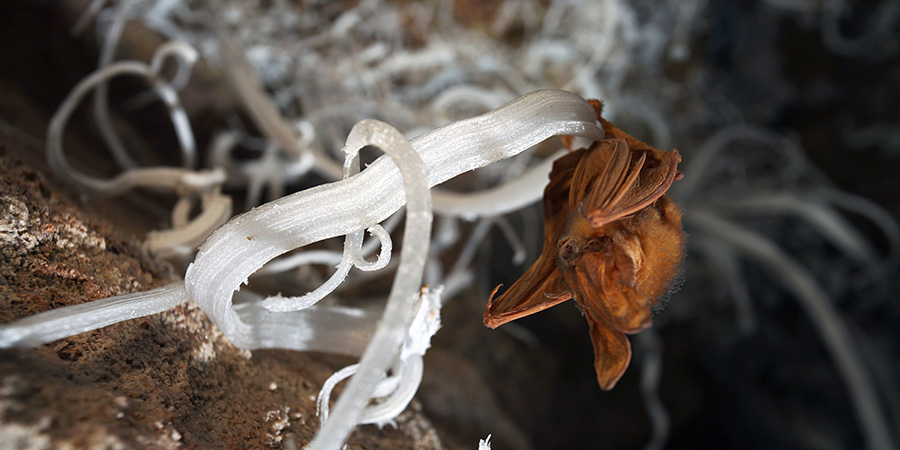
First, a mesmerizing story of some very old bats. In the fall 2024 issue of the Advocate, writer and photographer Stephen Eginoire takes you inside the Grand Canyon’s longest known cave. This 42-mile underground wonder contains otherworldly mineral formations. Some resemble ribbons of glass. Yet more amazing still are the animals found inside this epic cave, including hundreds of deceased bats.
So, how old are these bats? Pretty old, it turns out. In fact, radiocarbon dating shows some of them are at least 50,000 years old. Yet, because of the unique conditions inside the cave, they are perfectly preserved, including their fur and skin. Read Eginoire’s amazing story of the bats, their cave, and the team of cavers and scientists venturing carefully into the cave’s depths.
After you’ve read Stephen’s story, learn more about the bats with scientist Carol Chambers and others.
Not a Grand Canyon Trust member yet? Join for as little as $25 a year. Or give the gift of membership, which includes a complimentary 1-year Advocate magazine subscription. Subscribe now
2. The Grand Canyon agave
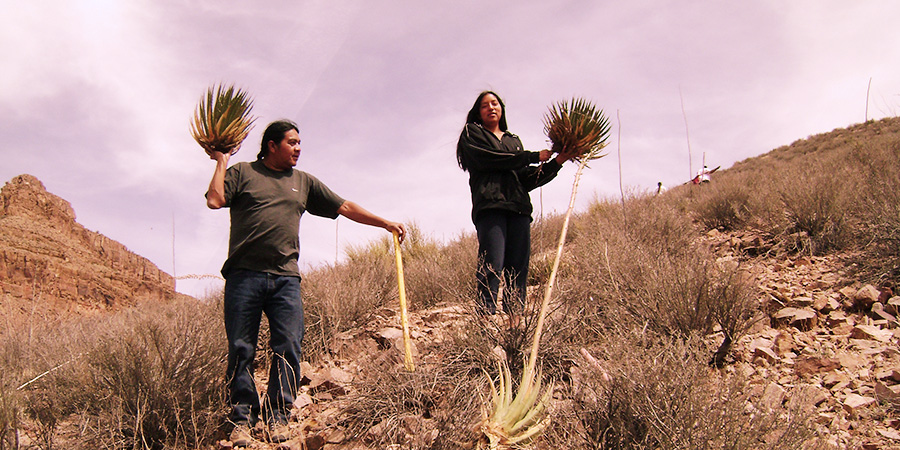
Next, a delicious story about a plant you might recognize from your last Grand Canyon hike. Carrie Calisay Cannon, an ethnobotanist for the Hualapai Tribe, teams up with botanist Wendy Hodgson and Hualapai graduate student Vincent Diaz to delve into the ethnobotanical history of the Grand Canyon agave, Agave phillipsiana.
Eaten like artichokes, the molasses-flavored Agave phillipsiana sheds light on how Indigenous cultivation and commerce shaped culture and nature in the Grand Canyon region. This spiny desert succulent whose edible heart tastes famously like maple syrup when roasted was brought to the Southwest by Indigenous people. Its journey tells an awe-inspiring story about Indigenous trade networks and the history of Indigenous farming in the Grand Canyon region. You’ll never look at an agave plant the same way again.
3. Split-twig figurines, a very old goat horn, and a possible link between the Grand Canyon and Bears Ears
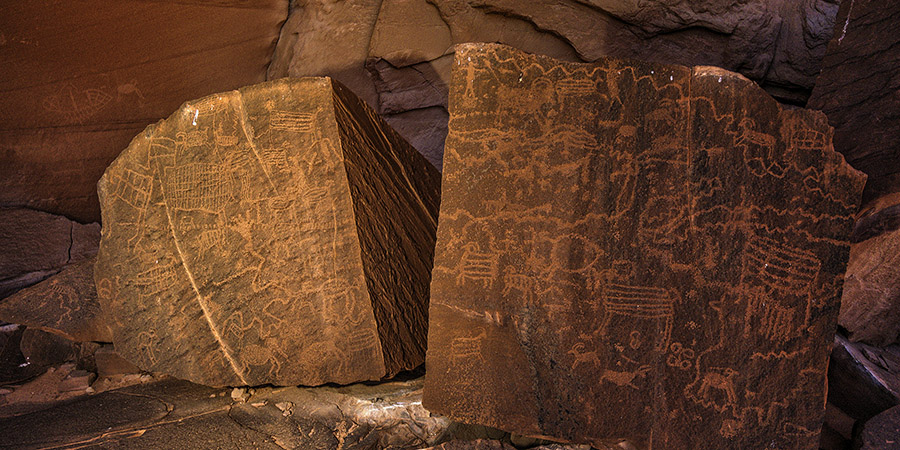
Finally, from the fall 2018 issue of the magazine, archaeologist R.E. Burillo shares a curious case of split-twig figurines. These figurines are usually made from a single willow twig. The twig is split down the middle and wrapped into complex forms, including that of bighorn sheep. Many of these figurines have turned up in dry caves in the Grand Canyon. And often they’ve been found alongside remains of the Harrington’s mountain goat, an extinct species which occupied much of the Southwest up until about 13,000 years ago.
These split-twig figurines haven’t been found in the Bears Ears region. But petroglyphs of split-twig figurines have been found carved into the rocks at Bears Ears. And at least one very old Harrington’s mountain goat horn has also turned up in the region, a fact that may offer insight into human migration and shared cultural knowledge across the Colorado Plateau.
Read more Grand Canyon stories in the Advocate magazine
Like what you’ve read? You’ll find more incredible stories of the Grand Canyon and Colorado Plateau in the Advocate magazine archive.
And if you’re not already a member of the Trust, become one today. As a new member, you’ll receive the next issue of the magazine to your mailbox. There’s so much to learn about the Grand Canyon and Colorado Plateau. Happy reading.

